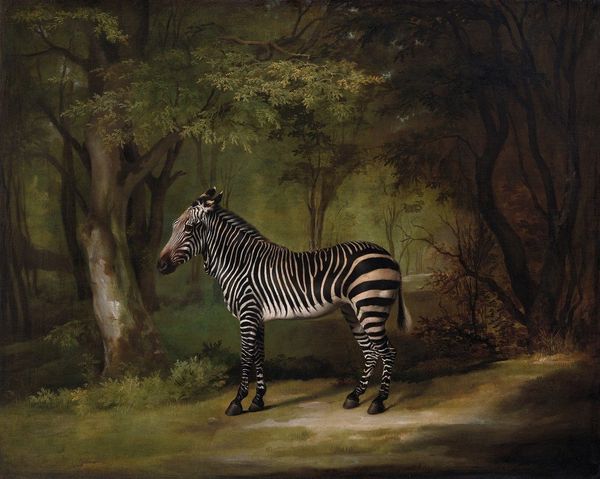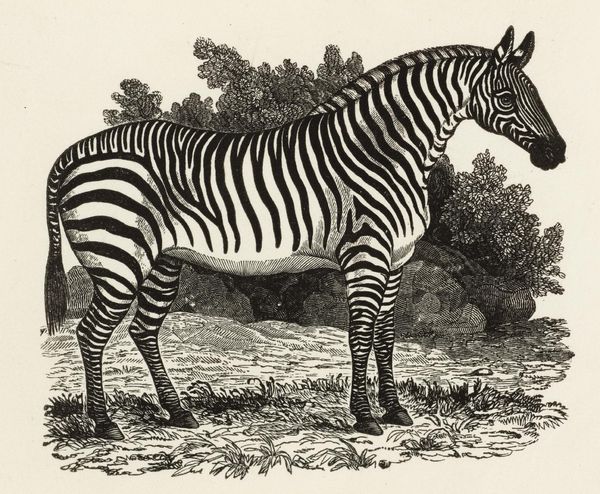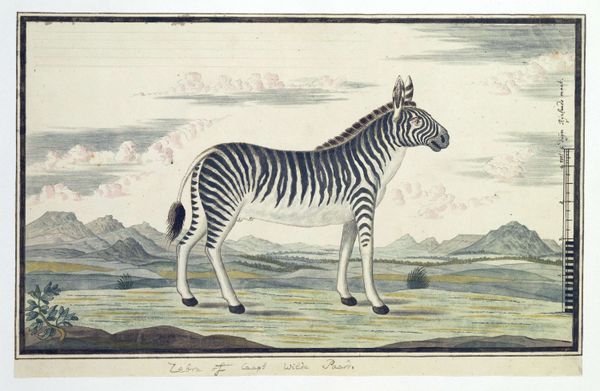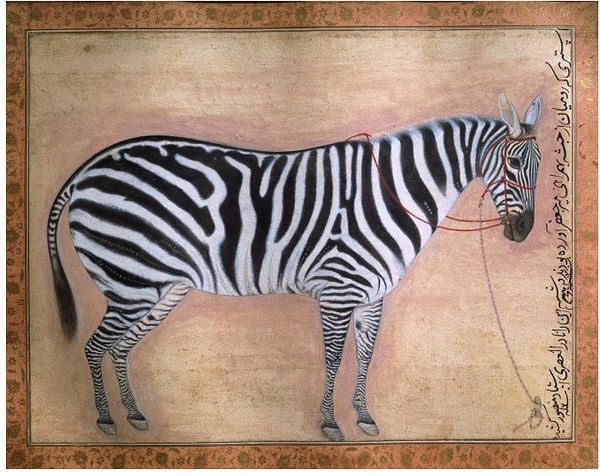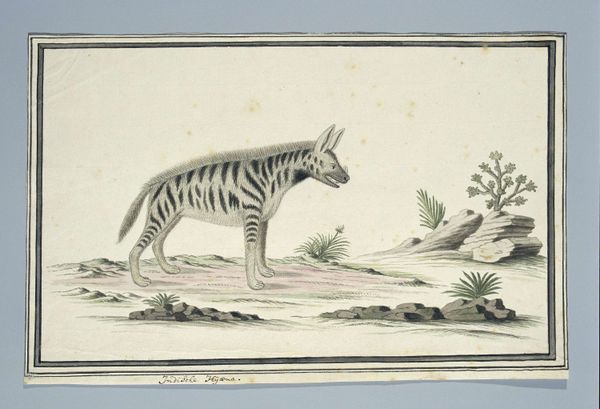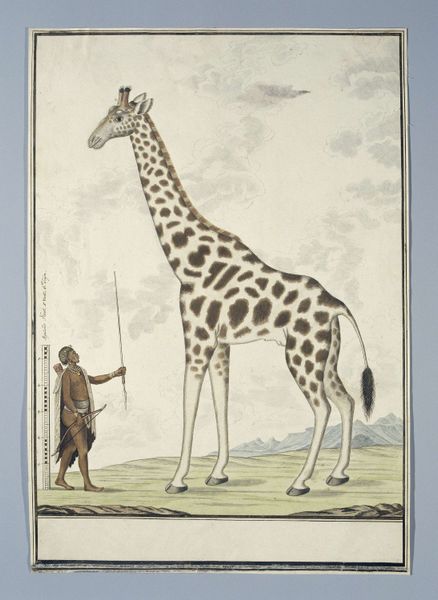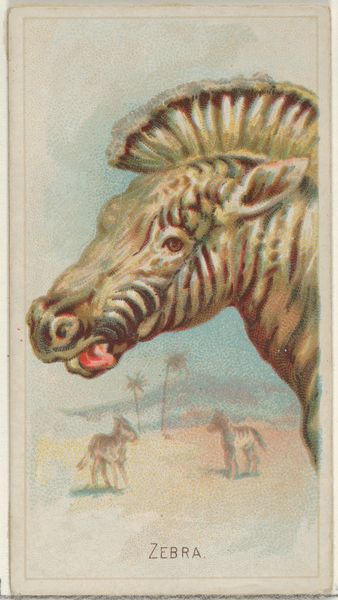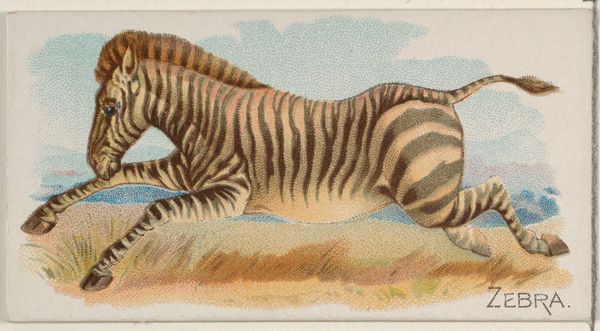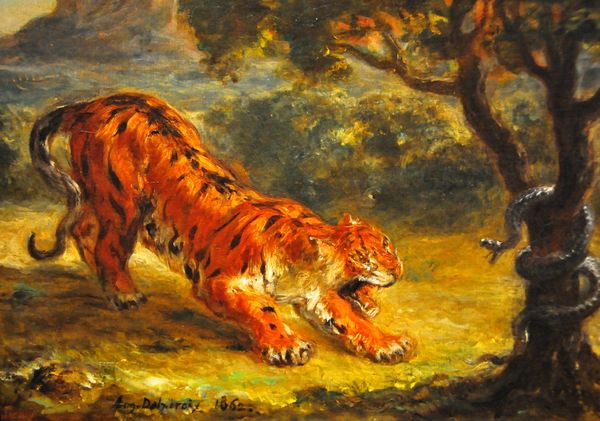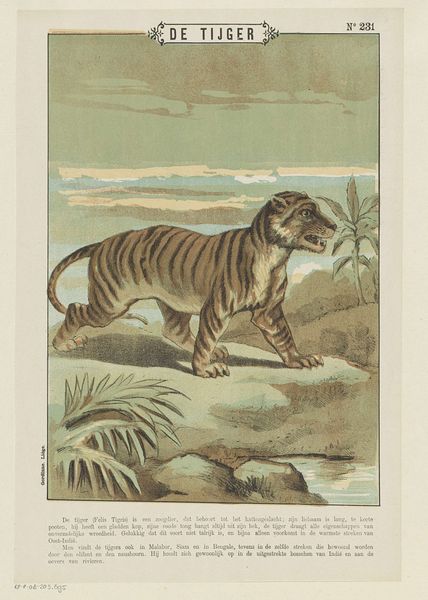
tempera, painting, fresco
#
animal
#
tempera
#
painting
#
landscape
#
figuration
#
botanical imagery
#
fresco
#
history-painting
#
realism
Copyright: Public domain
Curator: The work we're looking at is simply titled "Zebra," attributed to Luis Paret y Alcázar. What strikes you initially about it? Editor: The striking contrast of the zebra's stripes immediately catches my eye, almost feeling graphic against what appears to be a classically-styled landscape background, and painted using what seems like tempera on fresco. I am drawn to the stark interplay between the built structures and the untamed wildness represented by this animal. It definitely is not 'realism.' Curator: It's worth remembering that this zebra was rendered from life, based on one living in the menagerie of Luis Antonio Jaime de Borbón. So, to view it simply through a contemporary 'realism' lens might miss its important intersectional place between courtly power, nature, and empire. Editor: Interesting; how does the physical making process inform that reading for you? Curator: Think of it: the labor required to capture and transport such an exotic animal speaks to colonial exploitation and scientific advancement during this era, it would embody the royal subject position within this history. Paret's work naturalizes it in the painting. Editor: And yet, even if its exoticness makes clear this animal’s origin, the scene has clear ties to the European aristocracy. The scene depicts, along with the captured zebra, a carefully composed artifice with classical ruins. This clearly marks power relations at play. Curator: Precisely. I read those structures as symbolic, framing nature – represented here by the zebra – as tamed, known, possessed. There's also the underlying power dynamic related to its painter: this commissioned fresco emphasizes a very clear material context for the work. Editor: It truly encapsulates so much: artistic skill, social and labor power, political statement, class separation. An odd combination of objective natural observation meets blatant power politics. Curator: In contemplating Paret’s Zebra, what becomes most evident is how artistic, colonial, scientific and labor systems intertwine with the materiality of art. The historical context becomes deeply entangled with its aesthetic appeal. Editor: Absolutely, by considering process, materials and background we revealed layers beyond surface impressions, which are both intriguing and concerning at once.
Comments
No comments
Be the first to comment and join the conversation on the ultimate creative platform.

